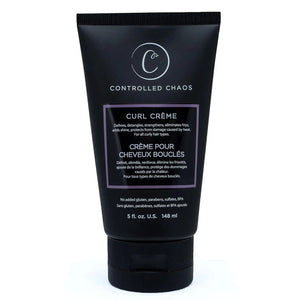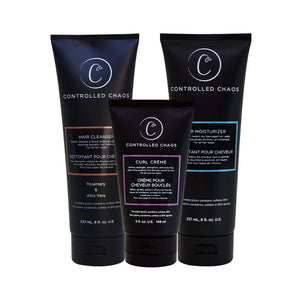

Hair comes in all sorts of textures, from straight to curly and everything in between. However, there's often a debate about where wavy hair falls on the spectrum. Some consider it a type of curly hair, while others argue it's a category. So, is wavy hair considered curly? Let's discuss the characteristics of each hair type and explore the nuances.
Understanding Hair Texture:
Let's understand the basics of hair texture. Hair texture primarily depends on the shape of the hair follicle. Straight hair has round follicles, while curly hair has oval or asymmetrical follicles. The more oval-shaped the follicle, the curlier the hair tends to be.
1. Curly Hair:
Curly hair ranges from loose curls to tight coils. Due to its structure, this hair type tends to be more prone to dryness. This is because the natural oils from the scalp struggle to travel down the length of the hair shaft. This can lead to frizz and requires specific care and maintenance routines to keep it healthy and defined.
2. Wavy Hair:
Wavy hair typically has gentle curves or waves that give it volume and texture. Wavy hair can vary in intensity, from subtle bends to more pronounced waves. Unlike curly hair, this hair type tends to be less prone to frizz and may hold moisture better due to its less tightly coiled structure.
Hair care routine for curly wavy hair:

While selecting the hair care routine curly hair vs wavy, here's a comprehensive guide to caring for curly hair:
- Shampoo Less Frequently: Curly hair tends to be drier, so avoid washing it daily. Opt for sulfate-free, moisturizing shampoos and wash your hair 2-3 times weekly. It is a great way to prevent stripping natural oils.
- Condition Regularly: Use a rich, hydrating conditioner after every shampoo to nourish and detangle your curls.
- Detangle Gently: Use a wide-tooth comb from the ends and work your way up to detangle your hair. This is great as a way to minimize breakage and frizz.
- Apply Conditioner: After washing your hair, you should apply conditioner. Focus on the mid-lengths and ends, avoiding the scalp, to prevent the conditioner from weighing down your hair.
- Use a Curl-Enhancing Product: Apply a curl-enhancing cream or gel to dampen hair to define and hold your curls. Scrunch your curly wavy hair with your hands to encourage the natural curl pattern and reduce frizz.
- Avoid Heat Styling: Avoid heat styling as much as possible, as it can damage and dry out curly hair. When using heat tools, always use a heat protectant spray and opt for a diffuser attachment on a low heat setting.
- Pineapple Your Hair at Night: Before bed, gather your curls into a loose ponytail on the top of your head (resembling a pineapple) and secure with a silk or satin scrunchie. This helps preserve your curls and prevents them from getting crushed while you sleep.
- Refresh Your Curls: On non-wash days, refresh your curls by spritzing them with water or a mixture of water and conditioner.
- Protect Your Hair: Wear a hat or scarf when outdoors to shield your curls from environmental stressors like sun exposure and humidity. Consider using products with UV protection to prevent sun damage. You should wavy curly hair to protect hair.
- Trim Regularly: it is good to schedule regular trims every 6-8 weeks to eliminate split ends and maintain the shape of your curls
In short, experimenting with different techniques and products is always a good idea to find what works best for your unique curl pattern and preferences.
Challenges in curly wavy hair
Here are some common challenges faced by those with curly hair:
- Frizz: Frizz is a common concern for curly hair, especially in humid weather. The outer layer of curly hair is more prone to lifting and becoming rough, resulting in a frizzy appearance. Managing frizz often involves keeping the hair well-moisturized and using anti-frizz products.
- Tangles and Knots: Curly hair can be challenging to detangle without causing breakage. Regular conditioning, gentle detangling techniques, and wide-tooth combs or fingers can help prevent tangles and knots.
- Shrinkage: Curly hair naturally tends to shrink as it dries, often appearing shorter than its actual length. This shrinkage can frustrate those who desire more length or volume in their curls.
- Lack of Definition: Some wavy hair types may need more definition, resulting in undefined or limp curls. Product buildup, improper styling techniques, or genetics can cause this.
- Styling Difficulty: Styling curly hair can be more time-consuming and challenging than straight hair. Achieving the desired look often requires experimenting with various products, techniques, and styling tools to enhance and maintain the curl pattern.
- Damage and Breakage: Curly hair is more susceptible to damage. Over-manipulation, heat styling, harsh chemicals, and environmental stressors can weaken the hair shaft and lead to breakage.
- Uneven Texture: Wavy curly hair may have varying textures throughout the head, with some areas being more tightly coiled or prone to frizz than others. This can make achieving a uniform look challenging and require targeted styling and care.
- Product Buildup: Curly hair absorbs products more efficiently, which can lead to product buildup if not properly cleansed. Product buildup can weigh down the hair, disrupt the curl pattern, and make it appear dull and lifeless.
- Limited Styling Options: Some hairstyles that work well for straight or wavy hair may translate less effectively to curly hair. Limited styling options can make it challenging for individuals with curly hair to find hairstyles that suit their preferences and lifestyles.
Conclusion:
In conclusion, the above blog has answered whether wavy hair is considered curly. Whether wavy hair is considered curly is a matter of perspective and interpretation. While some may classify it as curly due to its similar characteristics, others may view it as a distinct category altogether.
FAQs
Can someone have both wavy and curly sections in their hair?
Yes, it's common for someone to have both wavy and curly sections in their hair due to varying curl patterns across the scalp.
How can I determine if my hair is wavy or curly?
The best way to determine if your hair is wavy or curly is to observe its natural pattern when air-dried without styling products. Wavy hair typically forms gentle S-shaped waves, while curly hair has more defined spirals or coils.
Is wavy hair curly?
While wavy hair shares some characteristics with curly hair, it's generally considered a separate category due to its less defined wave pattern and looser curls.
Are waves a type of curly hair?
Yes, waves are a type of curly hair. They fall on the lower end of the curl spectrum, characterized by gentle curves rather than tight spirals.
What is wavy hair considered?
Wavy hair is typically considered its category, falling between straight and curly hair on the texture spectrum.
How do I know if my hair is curly or wavy?
You can determine if your hair is curly or wavy by assessing its natural pattern and the shape of the curls or waves. Curly hair tends to have tighter coils, while wavy hair forms softer, more subtle waves.



















